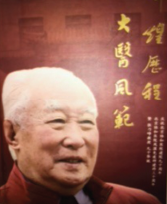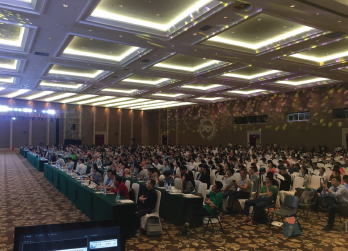The epidemiology of specific rheumatic diseases in China was not studied until 1984. In partnership with the International League against Rheumatism (ILAR) and the Asian and Pacific League Against Rheumatism (APLAR), Dr. Zhang led these initial studies. The prevalence was 0.2–0.93% for rheumatoid arthritis, 70 per 100,000 for systemic lupus erythematosus, 0.2–0.54% for ankylosing spondylitis, 5.1–20.8% for osteoarthritis and 0.15–1.98% for gout.2
In the early 1990s, an epidemiologic study of Sjögren’s syndrome was conducted under the leadership of Dr. Zhang, which was financially supported by domestic resources in China. This study found the prevalence of Sjögren’s syndrome in China ranges from 0.22–0.77%, depending on the criteria used. These results were published in the Journal of Rheumatology in 1995.3 Prior to this study, Sjögren’s syndrome was thought to be quite rare in China; it is now recognized as a relatively common rheumatic disease.
Teaching & Training the Workforce

Dr. Zhang
Dr. Zhang took the helm as the president of the CRA from 1985–96. Under his leadership, patient care, education and research in rheumatology advanced rapidly, as did the rheumatology workforce. Training via the CRA took place via regional and national rheumatology conferences with lectures from rheumatology experts. These were particularly valuable for underserved provinces in China. While Dr. Zhang was president, a couple of rheumatology textbooks were written and translated. The Chinese Journal of Rheumatology, the official journal of the CRA, has been available to Chinese physicians since 1995.
After Dr. Zhang’s retirement, the CRA has been led by Yi Dong, MD, Fulin Tang, MD, Fengchun Zhang, MD, Zhanguo Li, MD, and currently Xiaofeng Zeng, MD. Under the direction of these renowned rheumatologists, rheumatology in China has progressed tremendously over the past three decades.
Physician attendees at the first few CRA annual meetings numbered several dozen, and only several rheumatologists from China were able to attend APLAR in the 1990s. In addition, the largest rheumatology department in China, the Department of Rheumatology of PUMCH, comprised only a handful of physicians. Today, however, PUMCH has approximately 35 rheumatologists, and in May 2018, the most recent CRA Annual Congress in Fuzhou, China, had approximately 3,500 attendees. Approximately 120 rheumatologists from China attended the ACR/ARHP Annual Meeting last year, a huge increase from the small number who attended in the 1990s.
From the creation of the specialty of rheumatology in China to modern advances, the essential and substantial contributions of Dr. Zhang have been recognized and appreciated in China. Unfortunately, Dr. Zhang passed away at age 93 in 2014. We remember and honor Dr. Zhang as an outstanding physician, researcher, educator and mentor in rheumatology. Several of Dr. Zhang’s protégés have left China, and now work in the U.S., England and Australia. On behalf of his apprentices and the CRA, we salute Dr. Zhang once again.
Modern Rheumatology in China

The CRA Annual Congress in Fuzhou, China, in May 2018, attracted approximately 3,500 attendees.
